In this guide we’re going to look at the basics of selecting a monitoring system for your space/to meet your needs. At Funky Junk, we’ve run countless demo’s and loaned numerous pairs of monitors out for assessment over our 30 years in the pro audio game and, whilst technology and trends may change, we’ve found certain fundamentals prevail when it comes to selecting monitoring systems.
In this 3-part guide we’ll look into 3 areas of the monitoring chain:
- Control Room Monitoring & Monitor Controllers
- Live Room Monitoring & Cue Systems
- Headphones & Headphone Amps
“Failing to plan is planning to fail” as they say, so hopefully we can provide you with some food for thought that will save you hours/pounds worth of heartache. So, without further ado….
Part 1 – Control Room Monitoring
What is a control room these days? Sure, there’s the commercial studio control room based around a console, a combination of Main and Nearfield Monitors and linked to adjoining live performance spaces but that’s not the whole picture. Technology has empowered us with the tools to do more, within a smaller footprint. Today’s DAW based producer has all the facilities required to write, track, mix and master music from a single compact space if they choose to so, a contemporary control room can be many things and serve multiple purposes.
Control room monitoring therefore has to meet increasingly diverse needs.
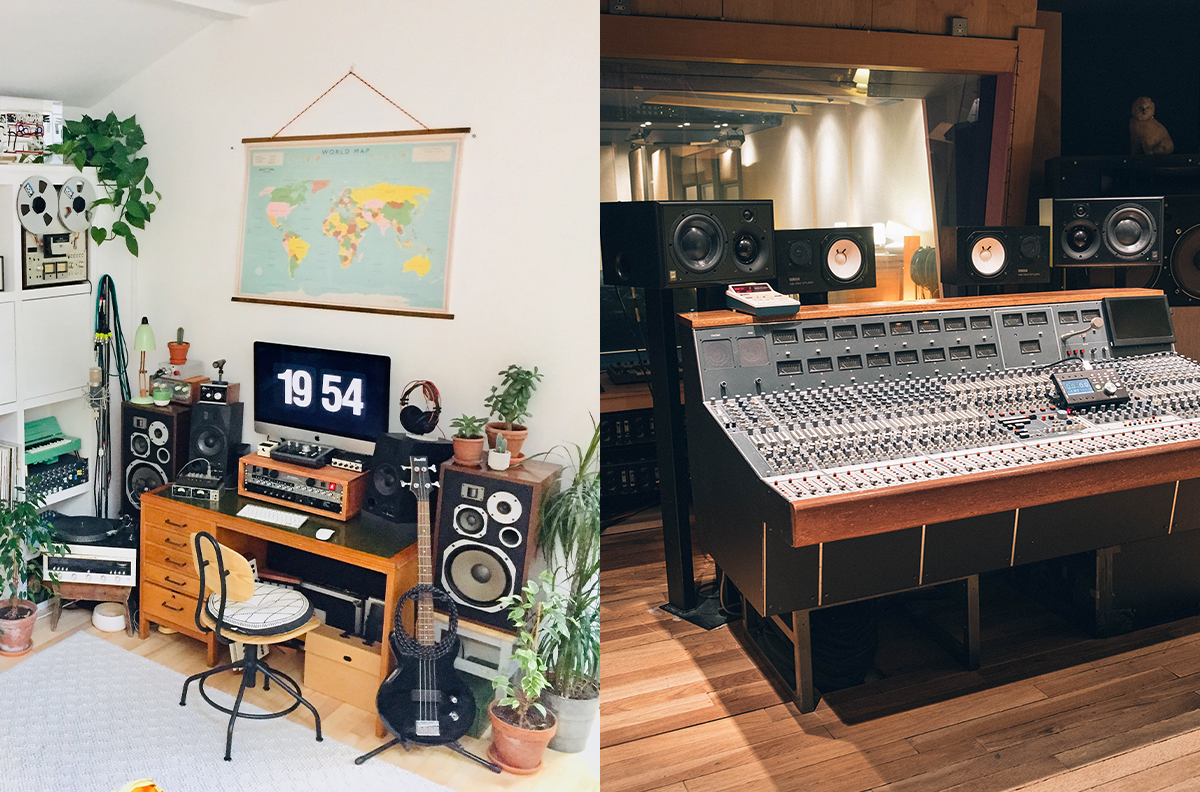
The needs of a bedroom producer can be very different to those of a commercial setup!
The 3 C’s – Define Your Needs
When it comes to choosing a new pair of control room monitors, I find it useful to define what I need from them before diving into models, budgets etc etc. My needs may fall into one of 3 categories that I commonly refer to as the 3 C’s:
- The Creative Choice – speakers chosen because they have a vibe that helps you write/get creative.
- The Critical Choice – speakers chosen for their revealing clarity to help you mix/master
- The Consumer Choice – speakers to check your mixes from a typical consumer perspective to see how they translate
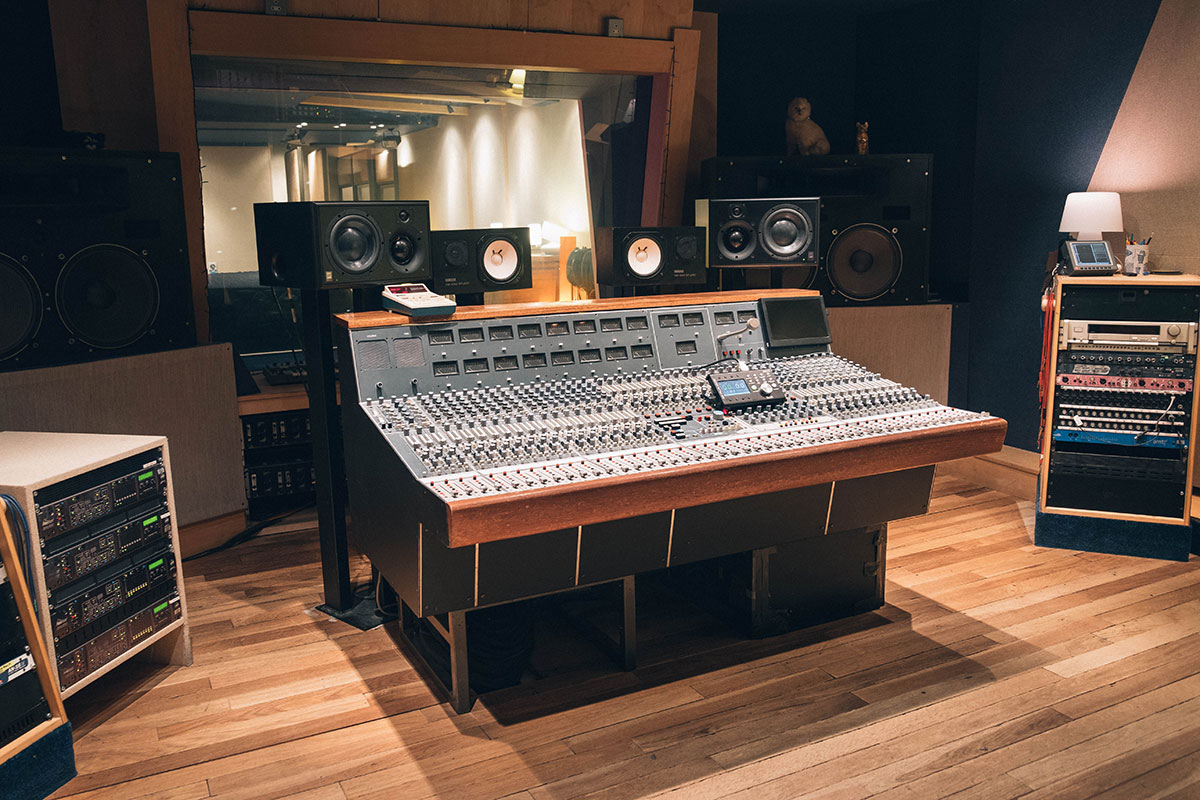
The Control room at Snap has all three C’s. The eastlake jm3t main monitors with atc sub bass to get a Creative vibe going, the ATC SCM25A monitors to listen Critically and the classic Yamaha NS10s to make sure the music is going to translate to more Commercialy available listening systems.
What Do You Want To Hear And Where Do You Want To Hear It?
Once I know which of the 3C’s I’m planning for it’s important to define what I want to hear and where I want to hear it. For instance, if I’m looking for a creative pair of monitors to help me write, I want to hear them at their best in my writing area (not everyone is anchored to their workstation), and perhaps I want to really feel the kick and bass to do my thing. Let’s assume my room has been treated (acoustics and isolation are lengthy and complex topics for another article), and my writing/performance area is towards the back of my room. In this case I need to consider:
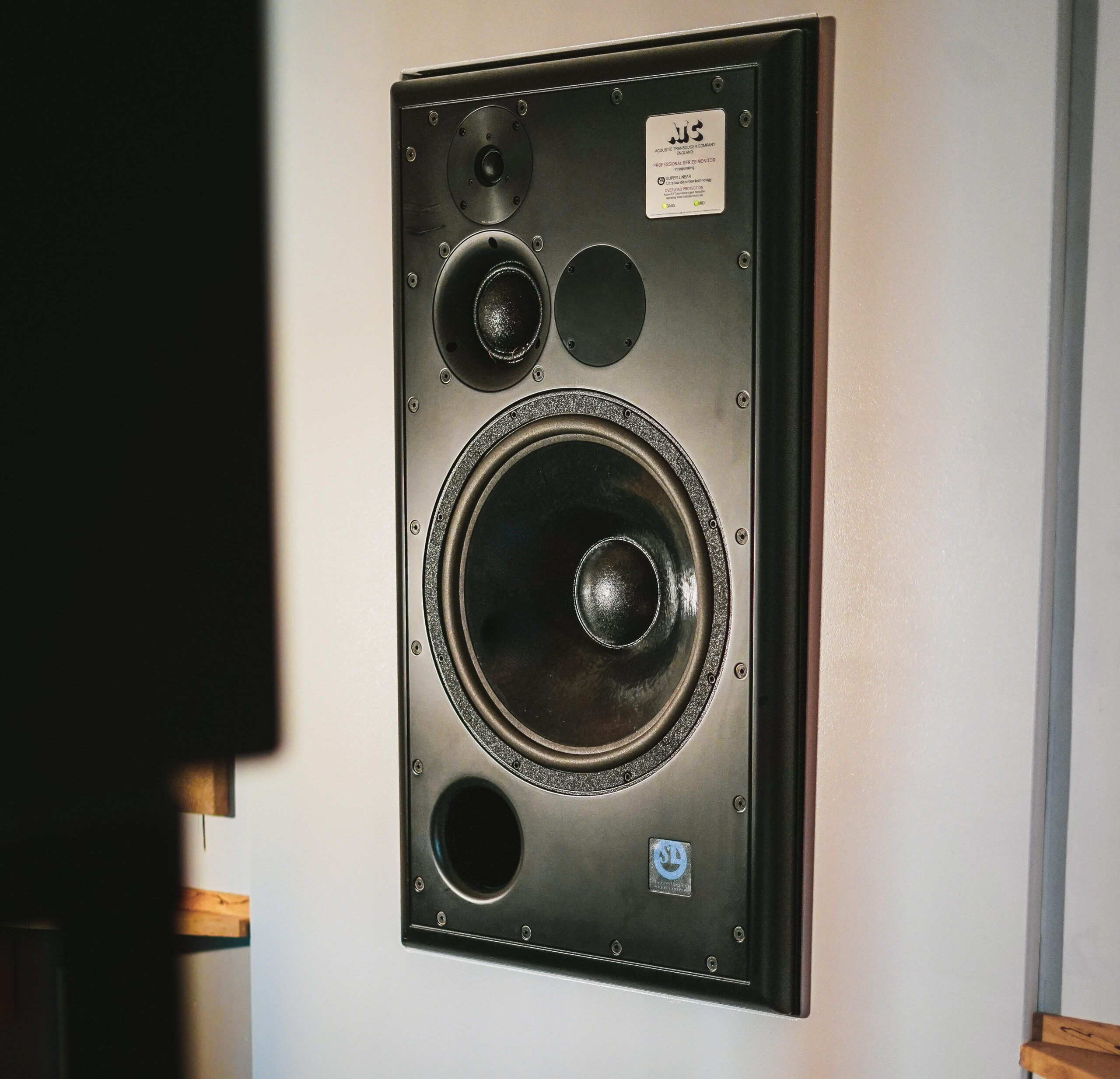
- The output levels and sound characteristics of the monitors I need.
- The size/location of the “sweet spot” I’m trying to create and therefore the monitor type (Near, Mid, Main, Sub).
- The physical size of the monitors needed and their array (vertical, horizontal, immersive, dual concentric).
- Where they need to be positioned (orientation in room, distance from walls, height from floor, spacing, equilateral triangle between monitors and back of listener’s head).
- How they need to be positioned (on the bridge, on stands, soffet mounted, ceiling, angling, decoupling).
These are real world, physical limitations; you can’t squeeze a pint into a shot glass. Yes, you can fill more of the room sonically with a pair of main monitors and create a larger sweet spot that enables you to move around without leaving it but; you need sufficient physical space to be able to do that well and without appropriate acoustic treatment and isolation you may create more problems than you solve. A well-positioned small monitor is preferable to a poorly-positioned large monitor so, be realistic in your planning.
When do you need them, what can you afford and what downtime can you risk?
In this age of one click online shopping, everyone has been encouraged to rush purchase but, when it comes to monitors (the most critical link in music production), patience is a virtue. High end monitors are often made to order so there will be a waiting time to factor in to your planning if that’s the way you want to go. Quality doesn’t usually come cheap either so, you may be better served by waiting and saving the budget for the best quality monitors you can buy rather than the ones you can pick up today with what you have left in the bank at the end of the month.
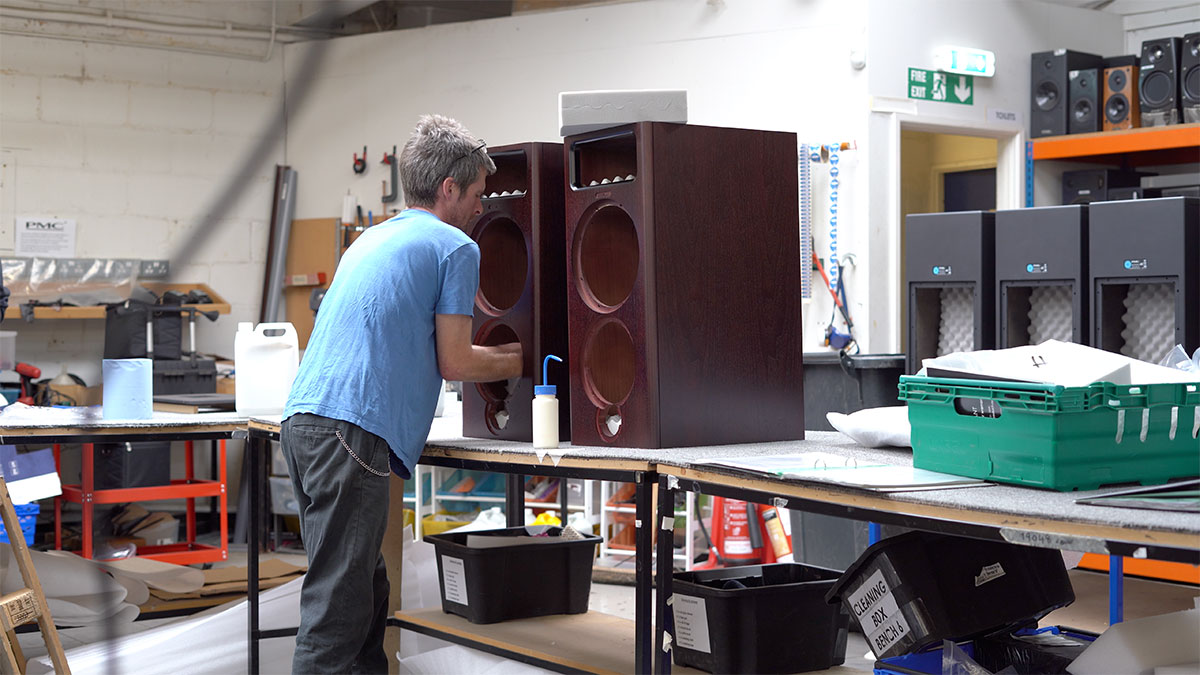
Speakers being handmade at PMC during our visit to the factory
There’s also another, often forgotten aspect of pro audio equipment purchasing that you should consider before dropping your hard earned; what does the support chain look like in the unlikely event that something goes wrong? The tech departments of numerous commercial studios have been thinned down in recent years which presents challenges but, for an independent producer working from their own facility, in house tech support is likely non-existent and therefore the challenge even greater, so tech support and warranty remain important considerations.
Pro Audio equipment failure is increasingly rare (although user error or unintentional damage isn’t), but, if it happens how quickly will your tech support team, retailer or the manufacturer be able to get you up and running again? Equipment containing esoteric parts that need to be replaced thousands of miles away in a small boutique may not be the best choice in a commercial environment where downtime equals loss of earnings; no matter how shiny they appear.
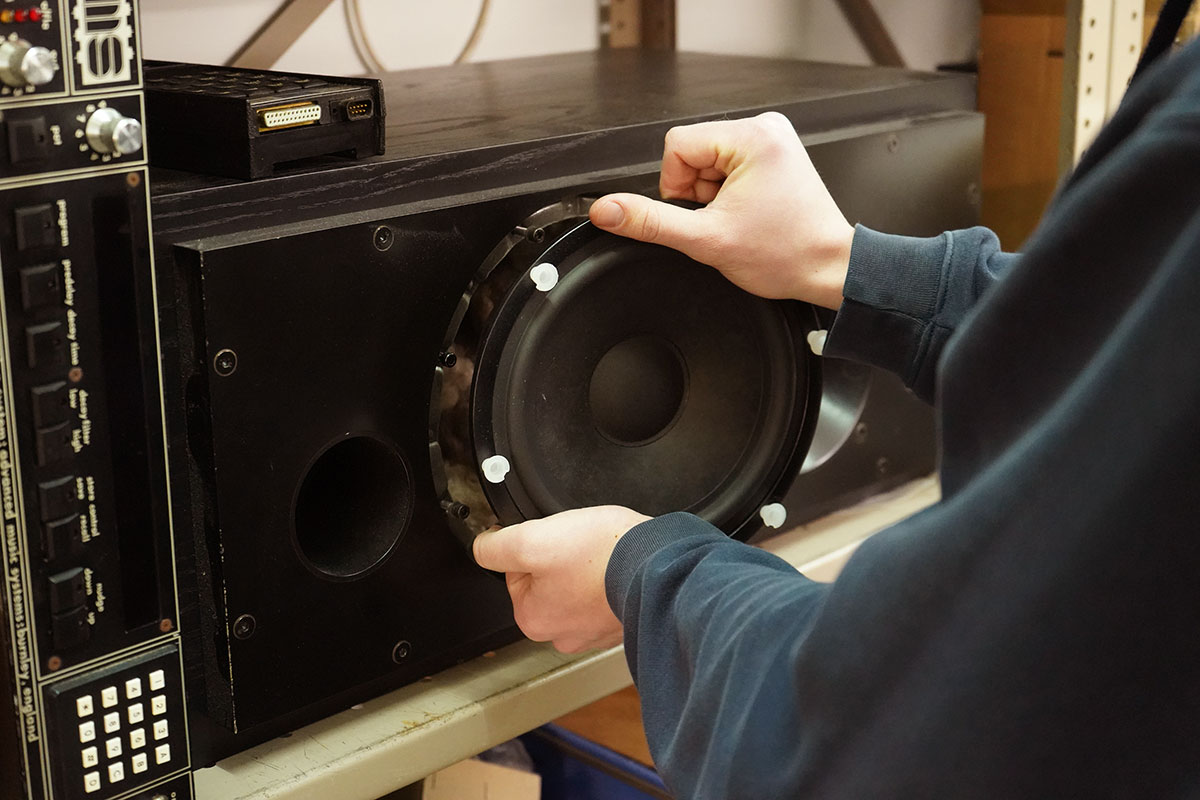
Monitors being repaired at Funky Junk Boffin Island.
Use Your Ears Not Your Eyes
By this stage you’ll no doubt have jotted down a short list of monitors that tick all the right boxes and you’ll probably have studied the tech specs, read the reviews and heard the opinions of others on various pro audio forums. So, time to decide and reach for the plastic then? No. Let me say that again, NO. The only true test of a monitor is to listen to it, work with it and see if you get the end result you’re after. But how do you do that without buying it first?
This is where you need to find a retail partner who has high quality demo facilities and demo stock to support you. Talk to us, we can help you work up a monitor shortlist and then arrange for you to come and listen to them at our professional demo facilities in London. From there, if you want to check them in your space to be sure, we can arrange a demo loan of your preferred monitors so you can work with them for a few days to confirm their right for you.
If you can’t get to a demo facility to shoot out your short list things become harder. Yes, many resellers will demo loan you a pair of monitors to try out, but few will lend you 2-3 at the same time to compare so, wherever possible make the effort, make the journey, and shoot out your shortlist first.
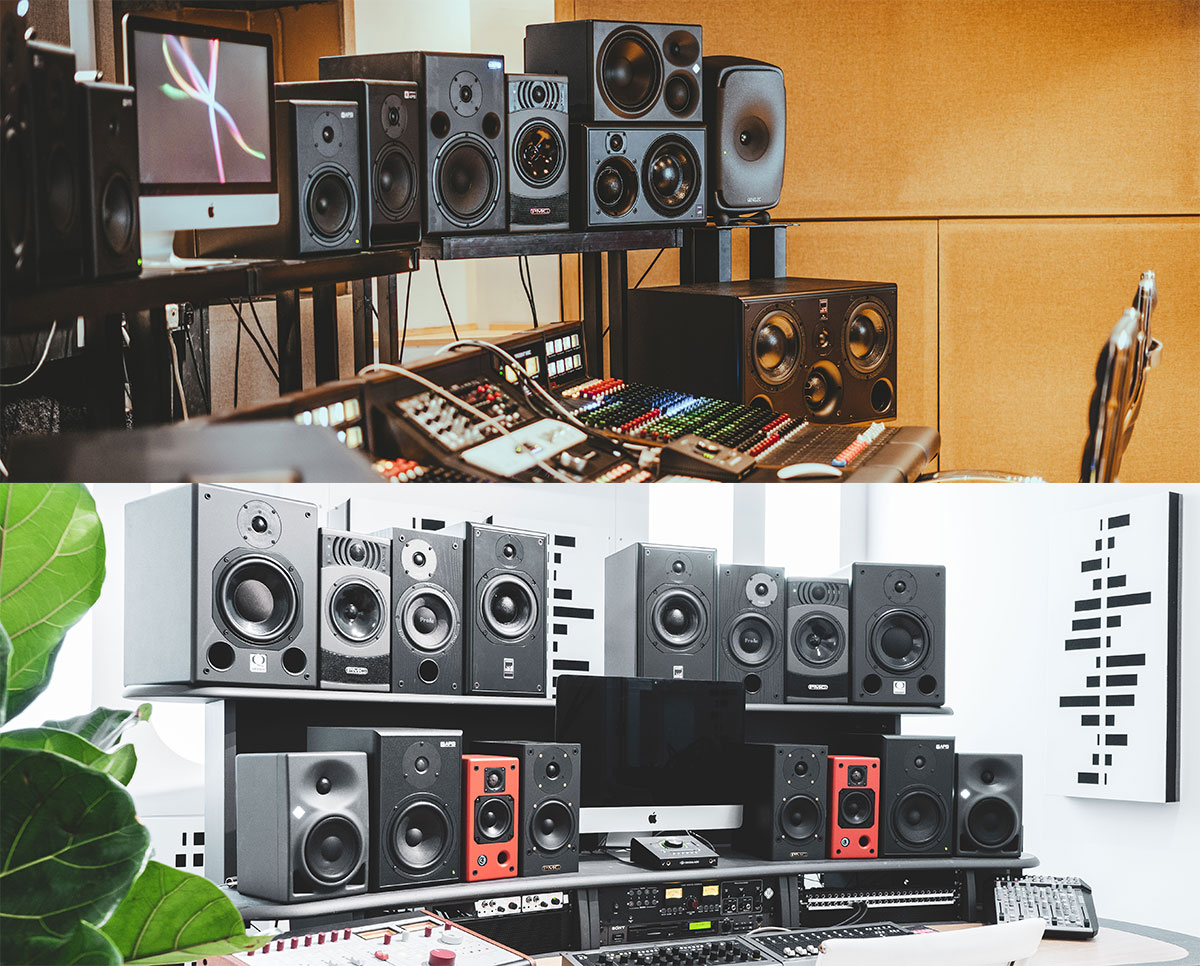
Demo facilities to suit different clients; Funky Junks Minitorium & Monitorium
What, No Console? – Rise of the Monitor Controller
What is a monitor controller and why might you need one? Simply put, a monitor controller is a standalone box that does a similar job to the control room monitor section of a mixing console (see the monitor section of the Trident Audio 88C left). It allows you to patch a source (or combination of sources) to a pair (or pairs) of monitors and headphones and adjust the playback level of those items to taste. You can switch between the various monitors and headphones connected to allow you to cross reference the sound from one to another or to support different working methods (e.g. tracking via one pair of monitors, mixing via another, talking back to the talent or overdubbing in the control room over headphones).
Regardless of the type or size of monitor controller, the most important thing is that it should in no way screw with the sound. If it does, then you’ll be making decisions based on the sound of your monitor controller and not based on what’s actually being recorded. It also needs to meet your needs in terms of the number of different sources that need to be fed to it, the number of different monitors that need to be fed from it, the audio formats it has to supply to those monitors (stereo, 2.1, 5.1, Atmos etc etc) and any control facilities you need (gain, dim, mute, mono check, headphone level, talkback etc).
So, do you need one? Well, if you’re running a reasonably specified console in your studio, control room monitoring facilities will already be built in and unless you want to be able to switch between more pairs of monitors than there are monitor output connections then the answer is probably no. If, on the other hand, you’re operating a DAW based control room without a console, you may prefer the convenience of a standalone monitor controller to switch between sources, monitors and headphones and adjust levels to routing everything inside your DAW and feeding your monitors directly from the outputs of your converters. There are options to suit every pocket and need.

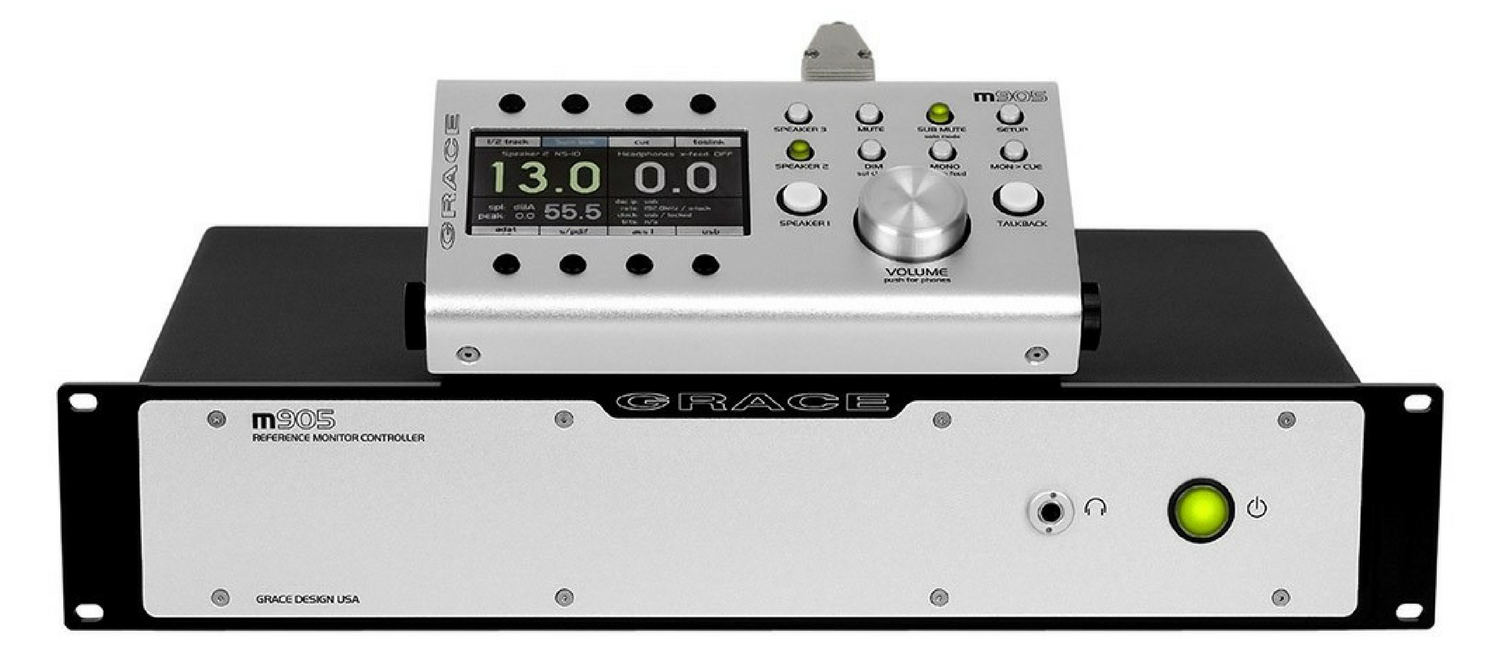
The stand-alone Grace Design M905 Reference Monitor Controller.
There are of course hybrid solutions too. Some audio interface and control surface manufacturers include monitor control sections within their products to provide an In The Box producer with an ergonomic turnkey solution to their needs.

The Universal Audio X4 with built in monitor controller.
So, that’s it for Part 1 of our guide. In Part 2 we’ll look at what you should consider when planning a live room/artist cue monitoring system. Until then….
